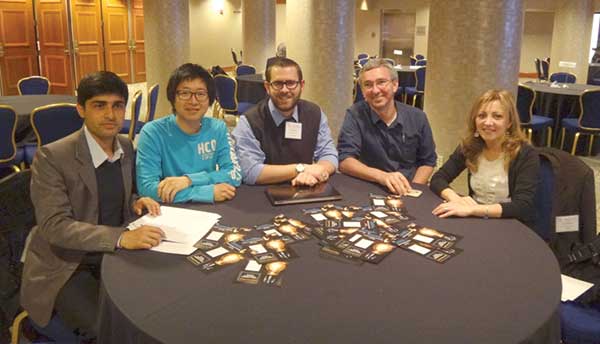The First Year: FECS Membership is Growing
Yunseong Nam, Member-at-Large and Raju Prasad Ghimire, Secretary/Treasurer

Yunseong Nam

Raju Prasad Ghimire
In today’s quickly changing scientific environment, there is one constant: We physicists continue to pursue our passion, and early career scientists in particular! Our forum, the Forum for Early Career Scientists, aims to enhance the APS’s ability to meet the needs of early career scientists and provide them with bottomless opportunity.
FECS executive committee members held their first informal meeting at the APS April Meeting in Washington, D.C. on January 27, 2017. During the meeting, many of our executive committee members shared the exciting news of the inception of our new forum with other APS members. The committee members also discussed how to expand the reach of our Forum to many early career scientists, in close coordination with the APS. Following the successful launch of our forum, many young, early career scientists continue to join FECS! Our membership figure has since grown rapidly. Building up on this newfound spirit among the FECS members, the committee continues to strive to fulfill the mission of the FECS, supporting our members by creating opportunities for increased inclusion and encouraging participation in various activities within the physics community.

From the left: Yunseong Nam, Daniel Kleppner, Maria Longobardi, Jason S Gardner, Raju Prasad Ghimire and Greg Hamilton

From the left: Raju Prasad Ghimire, Yunseong Nam, Greg Hamilton, Jason S Gardner and Maria Longobardi
Yunseong Nam, Member-at-Large
Nam received his doctoral degree in physics from Wesleyan University in 2016 and is currently a postdoctoral associate in QuICS. His research focuses on streamlining and optimizing quantum circuitries, from a smallest possible single-qubit gate to a macroscopic circuit, such as Shor’s algorithm. His current projects include investigating the errorresistance of a variety of architectures of quantum circuitries whose ideal, mathematical function is the same, determining which architectures to use in a practical, realistic setting when running a certain quantum code on a quantum computer.
Raju Prasad Ghimire, Secretary/Treasurer
Raju is an electrical engineering graduate student at South Dakota State University. Originally from Nepal, he holds a physics graduate degree from Tribhuvan University. His interests include materials engineering, and currently he is working on energy storage, renewable energy, and sensors.
